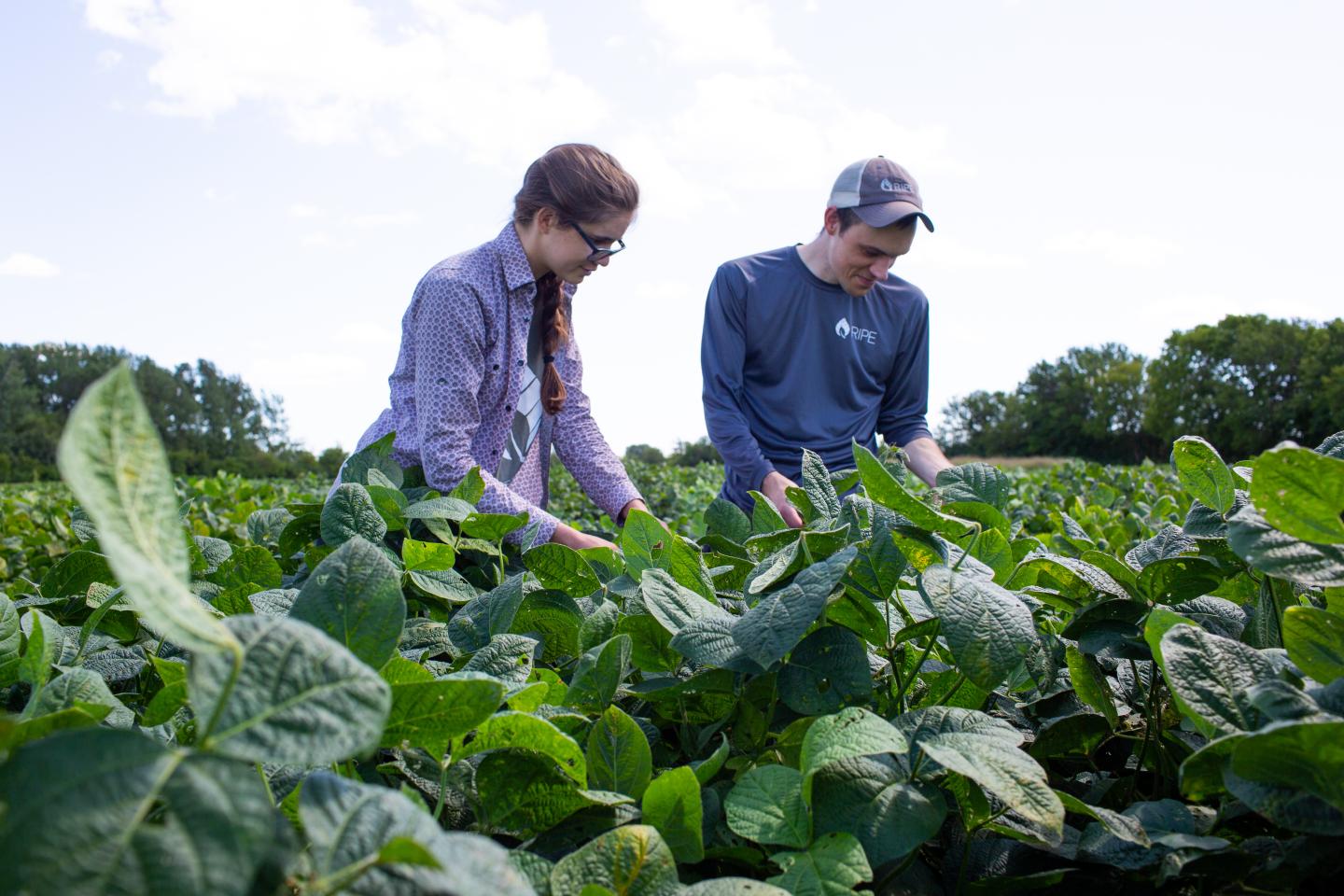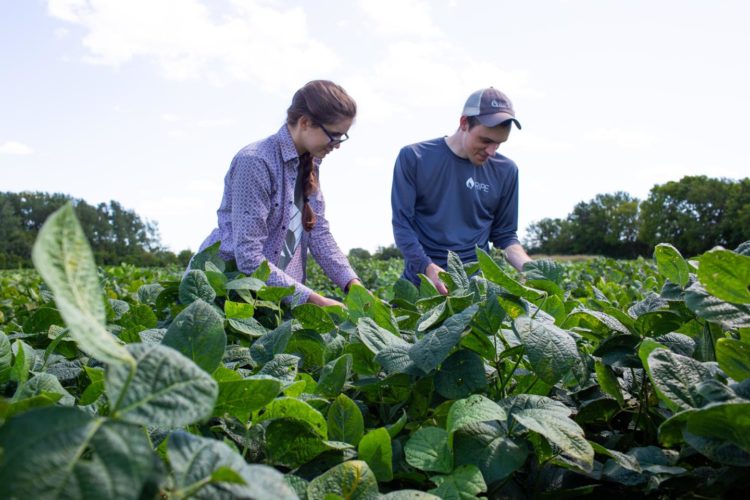
Credit: Claire Benjamin/RIPE project
CHAMPAIGN, Ill. — Komorebi is a Japanese word that describes how light filters through leaves–creating shifting, dappled “sunflecks” that illustrate plants’ ever-changing light environment. Crops harness light energy to fix carbon dioxide into food via photosynthesis. In a special issue of Plant Journal, a team from the University of Illinois reports a new mathematical computer model that is used to understand how much yield is lost as soybean crops grapple with minute-by-minute light fluctuations on cloudy and sunny days.
“Soybean is the fourth most important crop in terms of overall production, but it is the top source of vegetable protein globally,” said Yu Wang, a postdoctoral researcher at Illinois, who led this work for Realizing Increased Photosynthetic Efficiency (RIPE). “We found that soybean plants may lose as much as 13 percent of their productivity because they cannot adjust quickly enough to the changes in light intensity that are standard in any crop field. It may not sound like much, but in terms of the global yield–this is massive.”
RIPE is an international research project that aims to improve photosynthesis to equip farmers worldwide with higher-yielding crops needed to ensure everyone has enough food to lead a healthy, productive life. RIPE is sponsored by the Bill & Melinda Gates Foundation, the U.S. Foundation for Food and Agriculture Research (FFAR), and the U.K. Government’s Department for International Development (DFID).
Past models have only examined hour-by-hour changes in light intensity. For this study, the team created a dynamic computational ray-tracing model that was able to predict light levels to the millimeter across every leaf for every minute of the day in a flowering soybean crop. The model also takes into account two critical factors: photoprotection and Rubisco activase.
Photoprotection protects plants from sun damage. Triggered by high light levels, this process dissipates excess light energy safely as heat. But, when light levels drop, it can take minutes to hours for photoprotection to relax, or stop–costing the plant potential yield. The team evaluated 41 varieties of soybean to find out the fastest, slowest, and average rate from induction to the relaxation of photoprotection. Less than 30 minutes is considered “short-term,” and anything longer is “long-term” photoprotection.
Using this new model, the team simulated a sunny and cloudy day in Champaign, Illinois. On the sunny day, long-term photoprotection was the most significant limitation of photosynthesis. On the cloudy day, photosynthesis was the most limited by short-term photoprotection and Rubisco activase, which is a helper enzyme–triggered by light–that turns on Rubisco to fix carbon into sugar.
The RIPE project has already begun to address photoprotection limitations in soybean and other crops, including cassava, cowpea, and rice. In 2016, the team published a study in Science where they increased the levels of three proteins involved in photoprotection to boost the productivity of a model crop by 14-20 percent. In addition, the RIPE team from the Lancaster Environment Centre at Lancaster University is seeking better forms of Rubisco activase in soybean and cowpea. The RIPE project and its sponsors are committed to ensuring Global Access and making these technologies available to the farmers who need them the most.
“Models like these are critical to uncovering barriers–and solutions–to attain this crop’s full potential,” said RIPE Director Stephen Long, Ikenberry Endowed University Chair Plant Biology and Crop Sciences at Illinois’ Carl R. Woese Institute for Genomic Biology. “We’ve already begun to address these bottlenecks and seen significant gains, but this study shows us that there is still room for improvement.”
###
The paper “Photosynthesis in fluctuating light: An overlooked opportunity for increasing crop performance in the field?” is published by the Plant Journal and available online or by request. Authors include Yu Wang, Steven J. Burgess, Elsa de Becker, and Stephen P. Long.
Realizing Increased Photosynthetic Efficiency (RIPE) is engineering staple food crops to turn the sun’s energy into food more efficiently to increase worldwide food production sustainably. The RIPE project is supported by the Bill & Melinda Gates Foundation, the U.S. Foundation for Food and Agriculture Research, and the U.K. Government’s Department for International Development.
RIPE is led by the University of Illinois in partnership with The Australian National University, Chinese Academy of Sciences, Commonwealth Scientific and Industrial Research Organisation, Lancaster University, Louisiana State University, University of California, Berkeley, University of Essex, and U.S. Department of Agriculture, Agricultural Research Service.
Media Contact
Claire Benjamin
[email protected]
217-244-0941
Original Source
https:/
Related Journal Article
http://dx.





